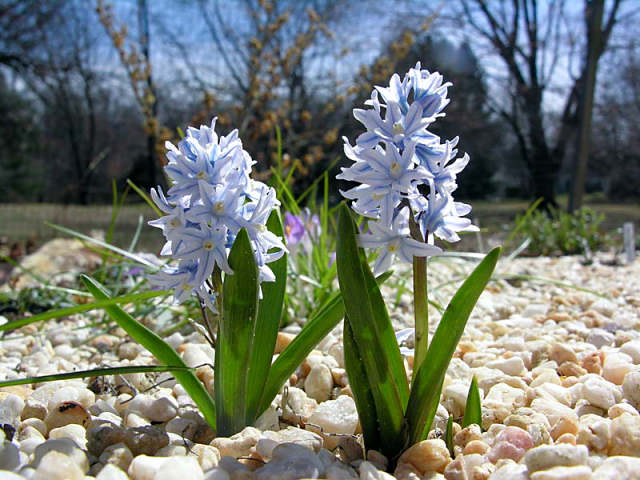By Pat Curran
Question:
What’s doing well in our area this summer?
Answer:
The only consistent thing about upstate NY weather is its inconsistency! After several overnight temps in the lower forties, here’s a report on veggies and flowers.
Tomatoes are slow to produce and ripen this summer. Here’s the latest from Cornell plant pathologist Tom Zitter (via e-mail Tues. evening). He reports tomato late blight that he observed in his garden just off Rt. 79 in the Town of Ithaca. He advises homeowners to harvest any fruit that is starting to show color, unless they plan to spray, or they are growing the new resistant varieties. There will be “perfect conditions for late blight” due to the cool damp weather.
 |
| late blight Phytophthora infestans Gerald Holmes |
Although tomatoes have been producing barely enough for a couple of salads each week, some adjacent veggies (growing in large containers in the hottest, sunniest exposure available at my cool country location) have surpassed expectations. ‘Swallow’ eggplant is a slender purple eggplant that never gets bitter. The first fruit arrived around July 10th, and the plants are loaded with more. This is also a very attractive plant, suitable for mixing with ornamentals, with its purple-flushed foliage and large purple flowers. Cover the young plants with row cover until they get big enough to outgrow fleabeetle damage.
‘Jimmy Nardello’ sweet pepper is an heirloom skinny frying type that appears to ignore cool nights. Even last year when planted in the ground, it produced lots of peppers for freezing. Basil is growing well, also in containers (I like to take a few plants in for growing at a sunny windowsill during the winter). The okra? Lots of flowerbuds, but little fruit set so far. The broccoli in the veggie garden looks good. This would have been a good season to plant snap peas late in May, but I didn’t because they fade away in hot weather. Had I known!
As for flowers, daylilies are blooming longer than usual, as they tend to do with lots of moisture. Perennial phlox and beebalm also appreciate the extra rain. Cardinal flower is in bloom now in damp light shade. Clethra, summersweet, a fragrant and very adaptable native shrub, is flourishing too. Look for the pink variety ‘Ruby Spice.’
 |
| hydrangea Hydrangea spp. Photo by Karen Snover-Clift |
Hydrangeas are looking good, if they are the types that bloom on the current season’s growth. ‘Quickfire’ is an earlier-blooming paniculata hydrangea with pinker blooms; ‘Limelight’ blooms a little later with green-tinged clusters. ‘Annabelle’ and pink ‘Invincibelle Spirit,’ cultivars of the native Hydrangea arborescens, are very handsome. Hydrangeas that carry their flowerbuds on last season’s growth may have been killed to the ground by last winter’s weather – so no flowers this year.
Ask a Gardener appears weekly in The Journal during the growing season. For answers to other garden, lawn, landscape and pest questions, call Cooperative Extension at 607-272-2292 or email: growline1@gmail.com. This article was written by Patricia Curran, horticulture program manager at Cornell Cooperative Extension of Tompkins County.

